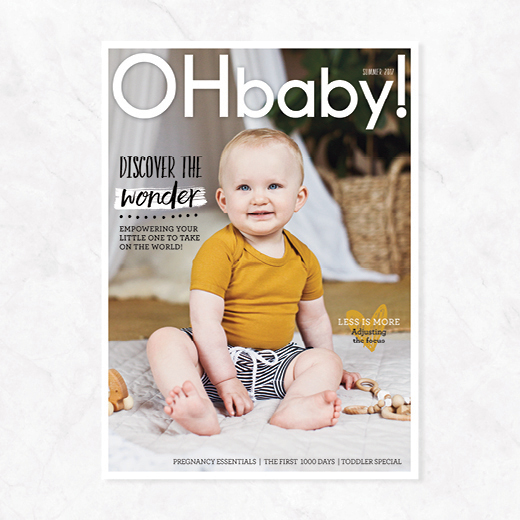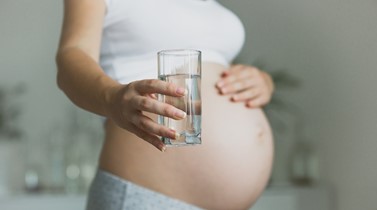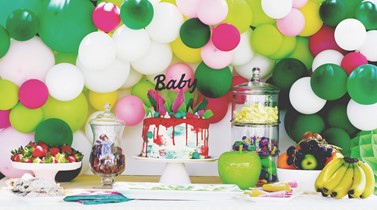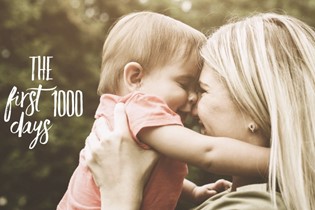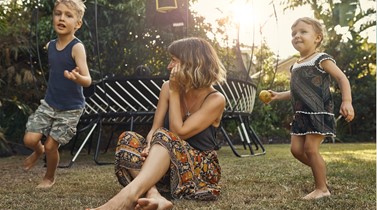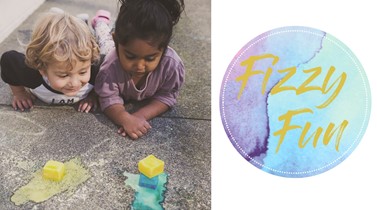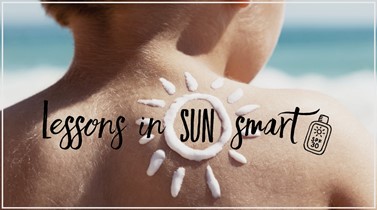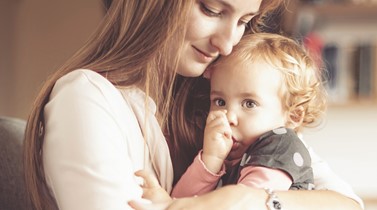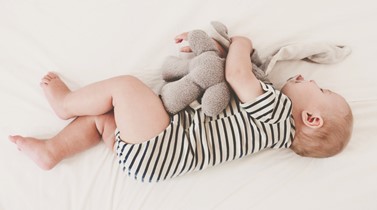The first 1000 days PART THREE: babyhood & toddlerdom
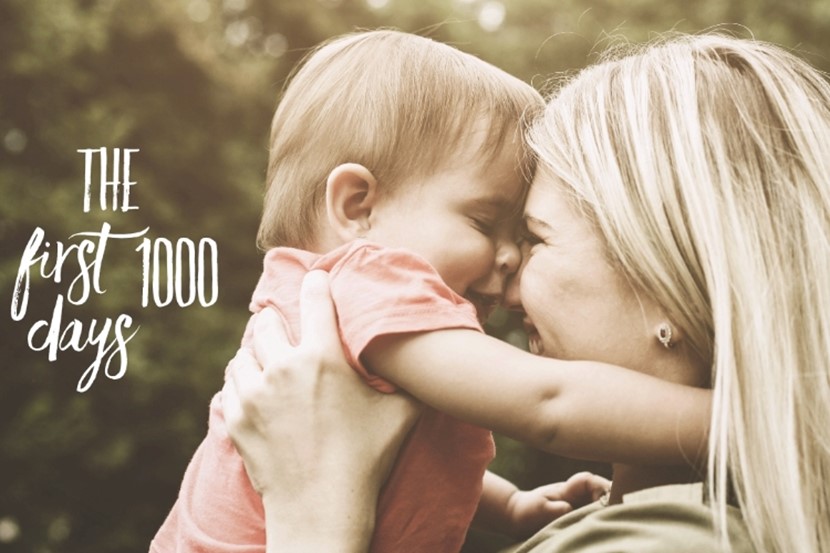
This is the third in our series of four articles on the first 1000 days of life. Research has proven this a critical and unparalleled window of time, which has a lifelong influence on an individual’s growth, brain development and relationships. Here we focus on days 500-750 (babyhood and toddlerdom from about eight to sixteen months) and share experts’ advice on how to best nourish hungry minds, bodies and souls.
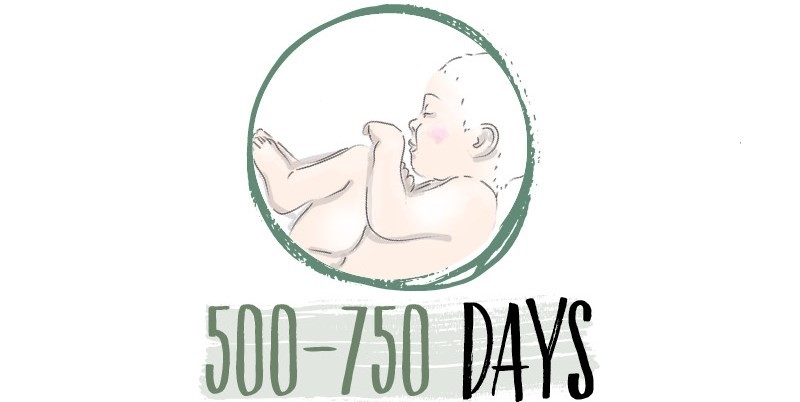
By eight months old your baby has really woken up to the world (even if you’re still, understandably, half asleep) and is wanting to meaningfully engage. Your home is their playground and science lab as they test their parameters and continue to make sense of all the new sights, sounds, smells, textures and tastes they encounter daily. As you watch this happen, it can serve as a great reminder that, as parents, we need to practise appreciating the simple things in life as well. Slow down when you can and imagine seeing through their eyes. Watch in wonder as their personality unfolds.
One of life’s greatest joys is to watch your baby experience their firsts, many of which happen between eight and sixteen months. Crawling, walking, dancing, riding … not to mention new foods and first words. Through both verbal and non-verbal communication, your baby is carving out their sense of self and learning how to relate to others. Rest in the knowledge that they’re their own little being, with their own unique strengths, and they’ll reach milestones in their own good time. As a parent, your responsibility is to provide a loving environment where they’re safe to explore and discover, and to look past the everyday battles to the healthy long-term habits you’re laying down. Just don’t forget yourself and your own relationships, and to celebrate how far you’ve come. As your little one takes his first steps, it’s a great time to assess your own sense of balance. 
GROWING INDEPENDENCE
Eight to sixteen months is a time of intense curiosity, experimentation and discovery. Dr Melanie Woodfield explores what’s really going on, and shares tips to help our little ones on their journey.
Sensing, relating, connecting – newborn babies are full of wonder, and invite delight in those around them. As the months pass (the days are long, but those months fly by!), babies are developing at a rate of knots in a whole host of areas – physical, cognitive, social, speech … the list goes on. And one of the most wonderful things is that this development usually happens naturally without fancy toys and equipment or perfect parenting practices.
As the months pass, the fog of sleep deprivation usually begins to lift and a new season begins. A season which includes the beginnings of independence. Cue the gasps of parental pride and clicking cameras as rolling and crawling happens. Lay the plastic in anticipation of banging spoons and flying puree. Witness your cherub intensely concentrate on colourful toys, which are flung away, then loudly mourned, then flung away, then loudly mourned once again.
One of the big changes that happens for babies as they develop is the ability to get to places independently. Sitting, rolling, crawling and those early steps all allow access to a whole new world. Babies at this age don’t just sit back and observe, they interact with their surroundings by mouthing and manipulating things, babbling, and watching for patterns in what things – and people – do. It’s so interesting when the dog grunts every time you pull its tail. And when Mum makes that noise after you’ve dumped the spoon on the floor lots of times. The ability to move, coupled with a driving curiosity, leads to lots of discovery and learning during this phase.
Cause and effect
Jean Piaget, who put together an influential theory around children’s development, suggested that very young children acquire knowledge and learn problem solving partly by manipulating objects in their environment, and partly by trial and error. Around this time, they develop the notion of cause and effect. This is essentially the expression on your child’s face when they press a button on their toy and an animal pops up – the realisation that “I pressed that, then that happened”. Many toys designed for young toddlers incorporate some elements of cause and effect to capitalise on this awareness and interest. Press a button and a light or a noise happens or something pops up.
Another achievement in this stage is the development of object permanence. As adults we take this for granted. Think of the classic game of peek-a-boo, where hands cover your face for a moment then they’re removed to baby’s delight. As grown-ups, this game isn’t as much fun – mainly because we know that the person hiding behind their hands is still there. For a young child, the game is surprising and entertaining, partly because until they develop object permanence, they believe that, if they can’t see something, it isn’t there. Object permanence is the understanding that an object still exists, even if we can’t perceive (see, hear, touch) it. This is why when you leave the room it can be profoundly distressing for a young child – they don’t have the awareness that you still exist but you’re just in another room. This is not to say you need to stay within view of your child at all times, it’s simply to help in understanding why they might become distressed at something seemingly so small.
Personality plus
Some babies are mostly calm, rarely cry, and when they do are easy to settle. Other babies are fussy and fractious, demanding and assertive. These features don’t directly translate into the adult that your wee cherub will become. It’s a tad more complicated than that, so fear not; your fussy infant won’t necessarily become an adult diva! Infant ‘personalities’ are a complex mix of their temperament and other things too, such as where adults in their lives are at emotionally, changes around them, rhythms and routines, caregiving habits and behaviours, sensory sensitivities, and feeding and sleep routines. But even as a newborn, you may see glimpses of who your baby will grow up to be. And as the months pass and baby begins to move, it’s interesting to see traits emerge. Is your baby confident to move towards others, or does she tend to hang back? Interested in new toys and foods or prefers old favourites? Sails through teething or grizzles for weeks? Some of these traits will be long-standing characteristics and some are classic signs of stages or seasons that most babies go through.
Separation Anxiety
Several developmental factors collide at around eight months of age. Your baby may enter a season of insisting they are carried all the time and bursting into tears if you leave the room. The child who was previously happy to be cuddled by almost anyone now only wants you. This reflects the healthy development of attachment connections, and when you throw object permanence into the mix, there’s the potential for a baby who doesn’t want you out of their sight.
Around this age, babies also develop the ability to show the facial expression of fear. Previously they could show interest (by holding their attention), disgust (at unpleasant tastes, for example), pleasure (smiling), and sadness or anger (eg when a favourite toy is removed). Knowing that your baby is afraid and distressed can make leaving them – even for short periods – really difficult. Alternatively, it can feel frustrating that your previously placid baby is now crying at the drop of a hat.
There are thousands of books and techniques which promote themselves as being the best way to stop babies crying. And hundreds of friends and relatives with a perspective. My two cents worth is as follows: trust your instincts. It’s that simple. You know your baby. If she has started being unusually clingy, chances are she needs cuddles. You’ll find plenty of Dorothy Waide’s practical tips on settling babies at ohbaby.co.nz.
Separation anxiety in infancy is completely normal, and while it’s demanding for a period of time, it will lessen as baby matures. There may be blips of increased anxiety around big changes in family life, such as moving house, travel or starting daycare. Thankfully, these are also likely to settle with time. It might help to return to familiar routines, people or objects to help little ones feel secure and stable.
Let’s get physical
Lots of communication between babies and the adults in their world can be non-verbal. By this age, adults are usually pretty practised at recognising baby’s signs of tiredness, overload or hunger. It can be tempting, especially if you’re frustrated, to resort to using lots of words to describe to your young toddler what they should be doing or saying. We’ve all been there – “You’re crying again? What’s wrong? I’ve just fed you! Calm down. It’s not that bad, you’ll be okay…” Too many words can be overwhelming and you may find actions to be more effective method of communication, particularly if emotions are running high.
When young children are distressed, there are a few core messages that are useful to communicate. These are nice and simple: “I’m here, I love you, I can help and I understand”. Of course you can say these aloud – that’s wonderful. Even if your child doesn’t yet understand all that you’re saying, they’ll absolutely appreciate your tone of voice. To accompany your words, there are also ways of conveying these messages through actions:
🎕 Long, firm strokes down their back.
🎕 “Mmmmm hmmmm” or other soothing sounds.
🎕 Rhythmic pats on their bottom.
🎕 Opening your arms wide to invite a cuddle.
Helpful Thermostats
You may not realise it but by being with your child in the midst of their big feelings, you’re helping them to regulate or modulate their emotions. You’ll notice that this is not about ‘controlling’ or avoiding emotions – our feelings have a purpose and a function and usually make sense. It’s often the behaviour or words associated with the feeling that we’re not so pleased with.
I tend to think of a thermostat on a hot water cylinder. If someone uses lots of hot water, the temperature in the cylinder changes and the thermostat ensures that the water comes back to a suitable resting temperature – not too hot, not too cold. The change in temperature is normal and to be expected. It’s neither good nor bad – it just is.
In parallel, changes in emotions are also normal and neither good nor bad. Small children experience big swings of feelings, often with huge intensity. Their thermostat (their ability to regulate their emotions) is beginning to develop. They have some basic ways to self-soothe, such as sucking a thumb or distracting themselves. But often times they seek help from the people they love for regulatory purposes. For example, young toddlers often have difficulty regulating fear, so they tend to express their fear in ways which attract comfort and attention – often this involves crying. A caregiver joins them and voices or physically shows the kinds of messages the child needs to hear to help regulate the fear. Spoken or unspoken messages like “It’s okay. I know you’re scared but Mummy’s here now. I can help. I’m here”. The adult is acting like an external thermostat and helping provide the regulation that the young toddler isn’t quite able to do independently yet.
Child development is an incredible thing and all the more fascinating when you see it happening in one of the little people you love. Enjoy the puree-smeared gummy smiles and the endless noisy toys, as despite the mess and noise, this is a season of incredible growth in both babies and those caring for them.
Dr Melanie Woodfield is a clinical psychologist in Auckland and mother of two. She works for a child and adolescent mental health service and writes and teaches on the side.

FOOD FOR THOUGHT
Nutritionist Hannah Gentile helps us look past the highchair antics and shares tips on how to set our babies up for a lifetime of healthy eating.
From the moment of conception up until your child’s second birthday has been dubbed, by science, as most important for developing their genetic blueprint. Nutrition is at the forefront of this evolving science and it feeds nicely into the growing discussion parents are having around how they can protect their children from obesity, cancer, cardiovascular disease, dementia, Parkinson’s disease, stroke and other such illnesses in later life.
A lot of emphasis is put on pregnancy, birth and starting solids. However, we forget that the impact of lifestyle on genes continues as a child grows and develops. What does this mean? We all inherit different genes in our body. What we are starting to understand, however, is that some of these genes lay dormant, switched off until a lifestyle trigger switches them on. Why is this important at eight months old? At around this age, babies go through a significant developmental leap. They become more aware of the world around them and how they can effect change within it; that when they do something, there is a reaction. Mealtimes offer a frequent and regular testing ground to further analyse their newly discovered theory of cause and effect.
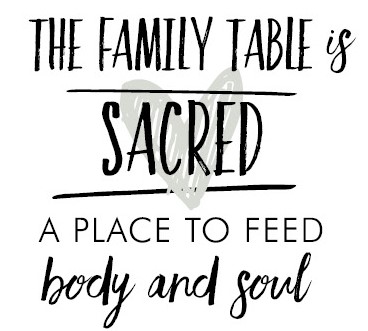
As parents we tend to run behind our child’s developmental progress, constantly surprised by where they are at and what they understand. For example, let’s take a seat at the highchair where baby has just thrown toast to the ground for the third time. We get frustrated initially, but then we realise that our little genius is just testing out cause and effect. “If I drop this, it falls to the ground. It doesn’t float next to me (Ah – gravity!)”. We may confirm the action; “Yes, it will drop to the floor, now eat it”, and we put the food back next to them (if it isn’t our first child – five second rule, right!?). But by now your little genius has finished testing gravity. Now they’re testing your reaction. “Does Mum throw the food out? Does she put it back on the tray? Do I get something better in its place? Wow – if I throw this bean, toast with peanut butter magically appears.”
Another example is spoon-refusal. We often see this around that same eight- to ten-month stage and many parents mistake it for fussy eating. In reality, a child is starting to exercise their independence with one of the few tools they have available. In this instance, offering your child their own preloaded spoon to have a go with, or making sure they have plenty of finger-food options, are great ways to sidestep the mealtime battles.
How does this relate to genes and healthy eating? Well, as parents our number one priority is that our child’s immediate needs are met, eg they are fed. The second priority is most likely that they are happy. Fighting over food, thus resulting in a crying child who has eaten nothing, is not satisfying those two parenting instincts. So when a child goes through this normal developmental milestone and seemingly plays up at mealtime, we satisfy this by producing foods they seem to ‘like’. Inevitably these are foods higher in sugar, fat and calories, whilst being lower in vitamins and minerals. This can click the ‘on’ switch for genes which lead to disease in later life. I find that this knowledge leads parents to ponder certain questions, especially:
- How much should my child be eating?
- What is the healthiest food for my child and should it all be organic?
- How do we keep mealtimes happy and healthy?
How much should my child be eating?
This is a tricky question when it comes to infants and toddlers because of their growth spurts; the timing and extent of which vary from child to child. Illness, as well as changes in sleep patterns and daily routines, can also affect a child’s appetite. Below are some general guidelines on how much a child should eat but remember it’s important to let your child judge how full or hungry they are. Take care not to override their cues by insisting they finish a meal. Also, avoid too many energy-dense ‘treat foods’ which don’t satisfy nutritional needs and leave your child still hungry. Children under one year of age should still have milk as their primary source of nutrients. This starts to slowly drop off as a child nears their first birthday. By 12 months old, a child is roughly eating around three small meals and one to two snacks per day. At each meal a toddler should be offered:
🎕 One serving of starchy carbohydrate, eg. bread, cereal or potatoes. A serving size is equivalent to ½ to 1 slice of bread, 2 crackers, 1 small scone, 4½ heaped tablespoons of cereal (less if it is muesli), 6½ tablespoons of cooked porridge, ¾ cup of cooked noodles, 1 small potato or 3½ tablespoons of rice.
🎕 One-to-two servings of fruit or vegetables. Serving size examples include ¹/³ medium apple or orange, ½ banana, 6 small grapes or berries, ½ pear, 2 florets of broccoli or cauliflower, or 4 carrot sticks.
🎕 Half a serving of dairy products. This would be equivalent to one serving every second meal, eg. include 1 cup of cow’s milk, 1 pot of yoghurt or a couple of slices of cheese.
🎕 Half a serving of meat, fish, eggs, nuts or pulses. As above, this would be the same as one serving every second meal, eg. 1 rasher of bacon, 1 slice of red or white meat, 3 tablespoons of minced meat, 1 sausage, 1 egg, 1 tablespoon of crushed nuts or nut butter, or 3 tablespoons of lentils, beans or tofu.
Is organic best?
Studies have confirmed that ‘organic’ is commonly misunderstood when it comes to food. Many people buy organic because to them it means ‘healthy’, ‘environmentally friendly’, ‘tasty’ and ‘not toxic’.
Consumer reports show organic food to be, on average, 47% more expensive than regular food. With it only being around 5-7% more expensive to produce, there is a bit of a gap. Is it worth the extra money? A systematic review of the nutritional quality of organic foods in The American Journal of Clinical Nutrition in 2009 found no significant nutritional difference between organic and regular food. The only difference was found in phosphorus levels, but as this is the second most abundant nutrient on the planet, it’s unlikely you’d be deficient, regardless of eating organic or conventionally farmed foods.
So what about the environment? One argument for organic foods is that they use less or no pesticide, which is better for the environment. However, this is a complete fallacy. Actually, organic foods can use more pesticide. What? I’ll take you through three reasons. Firstly, pesticide can still be used in production, it’s just ‘organic’, which means it comes from natural sources rather than man-made. To be clear, arsenic, uranium and ebola are organic. Organic doesn’t automatically mean safe or healthy. The EFSA 2009 (European Food Safety Authority) showed that organic pesticides are no safer than synthetic. Because organic food production uses natural pesticides, it can mean that these pesticides are not engineered to give the most bang for their buck, which in turn leads to farmers having to use more to get the same outcome. This leads to the second point: because the pesticides can be less effective, it typically results in a lower yield per square unit of land. This results in higher nitrogen and ammonia emissions, as well as less efficient use of machinery. The third reason is primarily due to Genetic Engineering (GE). Organic and no GE tend to go hand in hand. People are scared of genetic engineering because it sounds unnatural, but the reality is that GE foods are naturally occurring all around us, science has just found a way to help the process along in the lab, and has even produced drought-resistant vegetable crops. How does this form the third point regarding pesticide? Well, one GE development has been the breeding of crops that are resistant to certain pests. This means that conventional crops need even less pesticide than they used to, and hopefully over time this may drop to being no pesticide at all!
|
How do we keep mealtimes happy and healthy? 🎕 Sit as a family for as many meals as possible. This offers positive role modelling of interaction and healthy eating choices. 🎕 Always sit down when eating. Adults need to model this rule. It prevents choking and helps with mindful eating. 🎕 Healthy food needn’t be expensive. Make food from scratch, eg baking and sauces. Pre-made versions can have a hefty price tag and unnecessary salt and sugar. 🎕 Ease the pressure at mealtimes. Forcing a child to eat something will only make them reject it more. 🎕 Fussy eating is almost always a symptom of something else. It may be a texture aversion, a play at independence, a response to feeling unsettled, a high anxiety personality type, a negative memory of a recent illness, a reaction to parental discipline or a response to their own caregiver or sibling’s relationship with food. Almost every child will be fussy at some stage – food is one of the few things a young child can use to communicate with. It is how we respond to fussy eating that carves out our children’s future relationship with food. |
Hannah Gentile is a clinical nutritionist providing nutritional support and advice for conception, pregnancy, starting solids and fussy eating. Find her at nourishedbynature.co.nz

LET'S BE FRANK
Happy mama, happy bubba. Jo Robertson shares insights into simultaneously looking after our babies, our relationships AND ourselves.
Having just had my third boy eight weeks ago, it is fair to say I am writing this whilst in the thick of life changes. I am ‘in the trenches’ per se. Highlights of parenting this week include my two-year-old telling Grandma she can’t sit on a certain chair because “she’s too fat”, my four-year-old trying to grab my pubic hair in the shower because “it’s interesting and I don’t have any”, and my eight-week-old starting to smile! So, how does parenting affect our life? Well, in every single way imaginable. But some of the biggies are our bodies, our relationships and our lifestyle. Most people’s difficulties lie in one of those three categories, so let’s explore them.
Hormone zone
I describe the effects of child-rearing on the body as basically an assault; we go through this animal-like experience of birth (whether vaginal or Caesarean section), then we attempt to nourish a life through the sucking of our nipples. We have sore bits, wobbly bits, haemorrhoids and bleeding, and then we do it all over again! It’s crazy, but what’s crazier is that none of us would choose to take it back. Most of us look back on it fondly, knowing it was a remarkable season of our lives. It is, however, undeniably tough on our bodies.
One of the obvious issues, especially when it comes to sex, is that we have lowered oestrogen levels. Less oestrogen allows prolactin to be released, which we need for breastfeeding. Less oestrogen also means our skin is often thinner and we have a lower libido. It also decreases our vaginal lubrication, which can make penetration more painful.
We’re also experiencing hits of oxytocin when we breastfeed. This is dubbed ‘the love drug’; that warm fuzzy-all-over satisfied feeling we get when we look at someone we deeply care for. We get it during orgasm, but it’s also released during breastfeeding to build the bond between a mother and her baby. Your partner is still looking for their oxytocin quota through intimacy with you, but you’re often getting enough from cuddles with your baby. It’s a strange phenomenon, but your relationship needs are actually being met by your baby when they used to be met by your partner. Basically, your body doesn’t want to make another baby yet so it’s telling you to stay away from your partner. However, we want to manage this in our relationships and sustain some level of intimacy. Lots of couples expect this ‘dry patch’ to last just a few weeks but it can last up to a year or longer if you continue breastfeeding. Chat to your partner about how this is normal and not a reflection of your love or attraction to them. It’s actually biology and hard to compete with! While you’re still breastfeeding, grab yourself some natural, water-based lubricant and apply generously before any penetration.

Rest and recovery
The other enormous, life-changing and mood-altering change happening in our bodies is sleep-deprivation. One of the functions of sleep is to let the brain repair itself. During a deep sleep the cortex disengages from the senses for ‘recovery mode’, assisting your memory, language and so on for the next day. Mums tend to do a lot of multitasking, and as a result, actually need more sleep. However, we’re often at our most sleep-poor which affects every facet of our lives, including how tolerant we are in our relationships, how well we can handle a crying baby, and our resilience to any underlying depression. Sleep is essential to our day-to-day functioning, so do anything possible to get more of it. Go to bed earlier, visit a Plunket family centre who will take care of your baby while you nap, accept any help offered by others, and ask your partner to take baby out for an hour in the weekend so you can have rest time at home with no competing noise. Most women find that when they’ve stopped feeding regularly and are getting more sleep, their libido, their lubrication and their emotional wellbeing recovers. We need to be gentle with ourselves, ladies; the media tell us we need to be strong all the time, but listen to your body and give it time to heal.
A refreshing perspective
Another biggy is that you may feel more insecure about your appearance than you used to. I recently went to try on new togs – my first one-piece since I was a kid – and I just about died in the changing room. I also had a bikini-wax lady say she could tell I had had a baby, and I was mortified it all looked that different down below. Most people will rightly say that I have nothing to complain about, but even smaller people like myself have to adjust to new lumps and bumps. It’s very difficult for us to move past the psychological barrier of feeling unattractive, but I truly believe – and have had this confirmed by many dads – that they don’t see us the way we see ourselves. Partners are often just so excited to have a naked woman in front of them they don’t notice the imperfections we’re so insecure about. A sex therapist I knew once said “People need to start seeing themselves as their partner's favourite drink, something they relish and devour, to be tasted and experienced no matter the packaging”. I imagined myself as my husband’s favourite whiskey; that he saw me, felt desire, and wanted each moment to last as long as possible. Take hold of whatever concept you need to change your self-image and to build your own arousal prior to any touch from your partner.
Giving and receiving
So what about lifestyle? I find that by around eight months there are generally two groups of mums. Group A feel like they’re regaining their life; they may have gone back to some outside-the-home work, they’re getting a full night’s sleep, maybe even having a date-night occasionally. Group B feel like life is totally altered; they’re exhausted, potentially longing for some independence, and struggling for any quality time with their partner. Group A haven’t necessarily done anything differently from Group B, they may just have naturally better-sleeping babies, more family support or an easier breastfeeding experience. What I would say to Group A is we need to show lots of support to other mums. Think wider than your family and use your energy to love on others. For example, ask Plunket if there are families you could drop meals to, or volunteer in a teen mothers’ school.
To those in Group B; you are a trooper. You are fighting for your family every time you get up at 1/3/5am. You’re doing the hard yards but don’t feel you have ‘done it wrong’. My mantra for my current season is ‘Don’t be a hero’. I don’t cook great meals, I don’t visit lots of friends, I don’t even shower regularly. Group B, please prioritise yourself too. If you have some time without your baby, do something totally unrelated to housework or childcare. Tap out of that zone temporarily.
Those are the ramblings of a wife/mother/counsellor/friend/student-of-life. Final parenting highlights from this week; seeing my two-year-old scratching our car with the keys, and my four-year-old responding to a telling-off with “Actually, YOU need to calm down, Mummy”.
Living my best life.
|
OHbaby! relationship expert Jo Robertson is a trained counsellor completing a Masters in science with a sex therapy focus, and is mother to three young boys. |
CLICK ON THE LINKS BELOW TO VIEW ALL OUR 'FIRST 1000 DAYS' SERIES
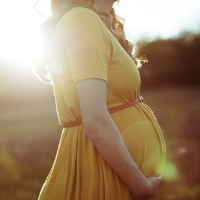 |
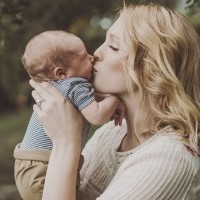 |
| PART ONE: PREGNANCY | PART TWO: BIRTH & BABYHOOD |
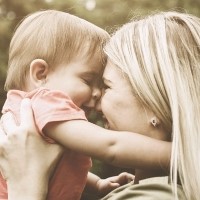 |
 |
| PART THREE: BABYHOOD & TODDLERDOM | PART FOUR: TODDLERDOM & BEYOND |

AS FEATURED IN ISSUE 40 OF OHbaby! MAGAZINE. CHECK OUT OTHER ARTICLES IN THIS ISSUE BELOW
